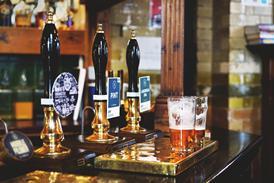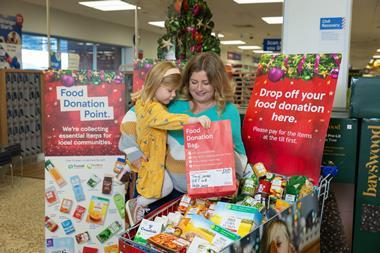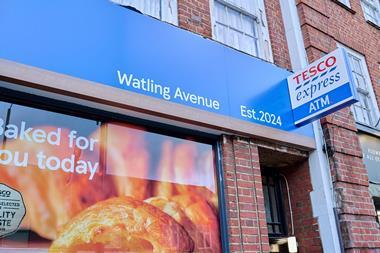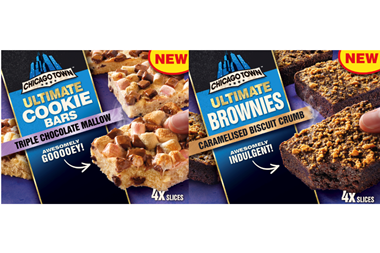Will consumers trust big business? Will the world economy go bust? Will multi-storey car parks be turned into allotments?
There's no need to spell out how invaluable being able to accurately forecast how the world will look in 15 years time would be to the grocery industry. And no one is more interested in gazing into the crystal ball than Britain's largest retailer, Tesco, and one of the nation's largest fmcg suppliers, Unilever UK - after all, they need to maintain their market-leading positions.
That's why they have joined forces to imagine four scenarios for the retail landscape in 2020 and beyond. The scenarios are the outcome of a £100,000 research project by sustainable development charity, Forum For the Future and present a tantalising insight into the future of grocery retailing and how best to optimise the opportunities.
The Grocer has been given an exclusive preview of the full report (see over), which will be published later this month.
What's so fascinating about the research is that, unlike many other crystal ball-gazing exercises, it does not just hypothesise about the fancy technology retailers and manufacturers may be using in a few years time. It also looks at the importance of consumer trust in the food and drink industry.
"On a light-hearted level the project has shown us opportunities to think about solar-charged products, packaging that refrigerates itself and self-cleaning kitchens, but there's a more serious side," says David North, community and government director at Tesco. "We have to use technology intelligently and recognise that if consumers don't want it, it won't work.
"The research shows a move towards providing services, not just products, which opens up huge opportunities if the conditions are right for retail to play a bigger part in consumers' lives."
The scenarios - My Way; Sell it to Me; From Me to You; and I'm in Your Hands - consider several key factors: climate change, resource depletion, global economic and demographic shifts. They also take into account likely changes in consumer attitudes and social trends.
Each pairs future economic and social conditions with consumer attitudes to give retailers and manufacturers a glimpse of the future and how they should prepare for it.
Two scenarios, From Me to You and I'm in Your Hands, paint a picture in which economic growth has been slower than expected and consumer confidence is low, as are levels of household income.
Conversely, in the scenarios My Way and Sell it to Me, economic growth and consumer confidence are strong.
The scenarios also assume potentially different consumer attitudes towards retail and look at what would happen if retail were to play a bigger role in consumers' lives compared with a scenario in which consumers had more autonomy. These are summed up in a 'do it for me' or 'do it yourself' attitude.
Which attitude consumers adopt could have a major impact on a company's performance. Research indicates that multinationals thrive in the 'do it for me' scenarios, whereas in the 'do it yourself' scenarios there is a greater role for co-operatives, small companies and local markets.
In the 'do it for me' scenarios, the onus is on the retail sector to provide consumers with information and to deliver products that make their lives easier. In the 'do it yourself' scenarios, however, consumers will tend to make their own choices.
In a 'do it for me' scenario, retailers could capitalise in a number of ways.
Using information from their consumer databases, they could introduce bespoke shopping lists to manage diets, for instance. Or they could deliver products to a customer's home with precision timing by utilising technology linking a household's fridge to the retailer's IT system.
Retailers 'seeing into your fridge' may seem an invasion of privacy. However, North believes consumers will welcome businesses into their lives if they trust them not to abuse their power. The potential relationship between big businesses and consumers is one of the most interesting debates that will be prompted by the project.
"There is the need to maintain or uphold trust, whether it's communities working together, government seeking legitimacy or big business selling to consumers," he says. "This has to be the biggest concern for retail."
As for which scenario will come closest to a 2020 reality, it doesn't really matter, believes North.
"In My Way, people want to solve problems themselves. In Sell it to Me people like big institutions to take decisions for them. I believe the real answer will lie somewhere in between," he says.
"Retailers will come up with services and products and empower consumers to decide which route they take, whether it's buying locally produced food or something brought from across the world, for example."
The fact that the project is a joint venture between a retailer and a supplier also increases its worth as an industry tool.
"We have carried out similar projects in the past, but many of the challenges we face cannot be solved in isolation," says Thomas Lingard, external affairs manager at Unilever.
"That's why we wanted the whole industry to see the results. They will help our long-term thinking by allowing us to feed our ideas into these scenarios and test our strategies."
Over the page, we present the four scenarios in detail. Tesco and Unilever are convinced that one or more of these scenarios will shape the way they do business. Tell us what you think (letters@thegrocer.co.uk).n
"It is impossible to know exactly what the future holds, but we can make informed guesses about what will be important and the range of outcomes we could expect." James Goodman, Forum for the Future
Scenario 1 My Way
The conditions
Society is prosperous, and consumers have a 'do it yourself' attitude.
This is an individualistic society with a high level of entrepreneurial activity, forcing large companies to innovate constantly to maintain their dominance.
The economy is dynamic, and consumers are inquisitive, fickle and demand more product information. There is an emphasis on local, whether it is government, trade or empowering communities.
Brands are less powerful and traditional advertising is less effective.
New products and services
Smart packaging refrigerates individual products using a tiny fuel cell that runs out on the use-by date.
Food will be grown in city centres, with multi-storey car parks and warehouses converted to food production using hydroponics and glass technology.
Personal carbon footprints can be measured and solar chargers in clothing give free energy for personal devices.
Consumers are likely to buy from a network of friends instead of big shops, while online ethical reviews give instant verdicts on products.
The retail structure
There has been a shift in power away from the dominance of large retailers towards individual producers who maintain high levels of consumer trust.
Purchasing is often through thriving markets or shopper co-operatives that have bought out traditional supermarkets. New methods of investing mean communities can raise capital for business with a local benefit.
Foreign ownership has increased competition and small, nimble entrants can displace large players quickly.
Large retail chains have adapted by using local brand names on the high street, and becoming logistics experts at a local level.
High streets feature more luxury and niche stores as well as some 'direct from the producer' stores.
Scenario 2 Sell it to Me
The conditions
Society is prosperous and consumers have a 'do it for me' attitude.
The UK economy is buoyant, consumer confidence is high and consumers are comfortable with big business, trusting it with a lot of personal information.
Consumers enjoy their pleasure-seeking lifestyles and expect institutions to solve problems such as the environment for them.
Consumers spend heavily with trusted brands, but have high expectations about personalised products and retail entertainment.
New products and services
The personal touch is key and shoppers will demand bespoke products such as specifically requested soap scents or cereals made to a consumer's own nutritional requirements.
Supermarkets can manage shoppers' diets using the huge amount of personal information they hold, and supply them with the right amount of food at the right time by communicating with the consumer's fridge.
There will be one-stop service shopping, with city centre 'market villages' run by supermarkets, featuring outlets such as Boots GP surgeries and Sunsilk hair salons. Supermarkets will offer customers a home pick-up service, and offer lifetime discounts as part of a government-backed babybond scheme.
Growers and manufacturers will bypass supermarket websites and deliver direct to the consumer via courier.
The retail structure
Big retail still dominates, with a strong presence of small specialist businesses, often owned by larger companies.
Relaxed planning laws allow for larger stores, while mergers have integrated processing firms and farms, creating a corporate rural society.
Distribution is by rail or bio-fuel trucks rather than aviation.
Marketing is about creating trust and a connection to brands, not products.
Scenario 3 From Me to You
The conditions
Society is less prosperous and consumers have a 'do it yourself' attitude.
The economy is subdued and uncertain, and fear about climate change and severe weather events has increased.
Large companies and government have lost consumer trust. Consumers feel big business has failed to deliver on the challenges faced by society.
Consumers like to develop solutions themselves and are less willing to pay for luxury or convenience. There is a preference for home-grown cheaper solutions, with a personal debt crisis leading to less disposable income.
Loyalty to brands is low, and the levels of choice are low because of resource constraints.
New products and services
Consumers will buy shares in local farms. Shoppers can pick up a chicken on processing day and learn about the slaughter process.
Hemp is in high demand and is used in food, plastics, clothing, fuel and cosmetics.
Community-grown produce can be sold to regional and national food distributors and logistics companies, which provide start-up kits for growing fruit and veg.
The retail structure
Being local is a source of competitive advantage and companies are turning to a social entrepreneur/franchise model.
UK agriculture is blossoming, and a smaller proportion of fmcgs come from abroad.
Peer-to-peer services for swapping and selling goods are on the rise and community enterprises grow.
High streets are struggling and many shops remain empty. Repair shops become more common, and guerrilla traders often occupy empty retail space for a short time before moving on.
Mass marketing is rarely used. Advertising is regional and companies promote word of mouth recommendations through social networks.
Scenario 4 I'm in Your Hands
The conditions
Society is less prosperous and consumers have a 'do it for me' attitude.
Economic confidence is shaky, growth has slowed and credit is more tightly regulated as a result of a personal debt crisis.
Consumer confidence is low and people look to government and large business to provide products and solutions.
It is a more structured, centralised and supervised existence. CCTV is welcomed as being in the public interest.
Paternalistic, trusted brands have survived and prospered. Consumers are less interested in shopping for leisure and consumption has become functional.
New products and services
Retailer-leased equipment such as dishwashers, washing machines, cookers and fridges are replaced every three years and regularly upgraded and serviced.
Retailers provide cradle-to-grave services, from major purchase advice, energy and water services, insurance and funeral care to wedding planning, holidays and lifelong learning. Consumers can sign up for lifetime extra discounts.
Local supermarkets will cook meals in store and deliver them.
Development of new technologies proceeds at a slower pace.
The retail structure
It is a world of big business, and small organisations find it difficult to survive.
Companies are consolidating and many own operations from production through to sales and disposal.
Small high streets are in decline. Big high streets are dominated by large retailers, but they are just showrooms: people browse and order, and their purchases are delivered with their regular shopping.
Non-retail companies are gaining a foothold on traditional retail space.
Retail is heavily regulated but government and the main players have developed much of the regulation together.
Relationships with consumers are strong, and some retailers operate compulsory loyalty card schemes.four visions of the future
The four retail climate scenarios take into account factors such as climate change, rising energy costs, resource scarcity, prosperity and consumer attitudes. Each scenario is broken down into three distinct areas: the likely conditions
(socio-economic and environmental); new products and services; and retail structure.


















No comments yet